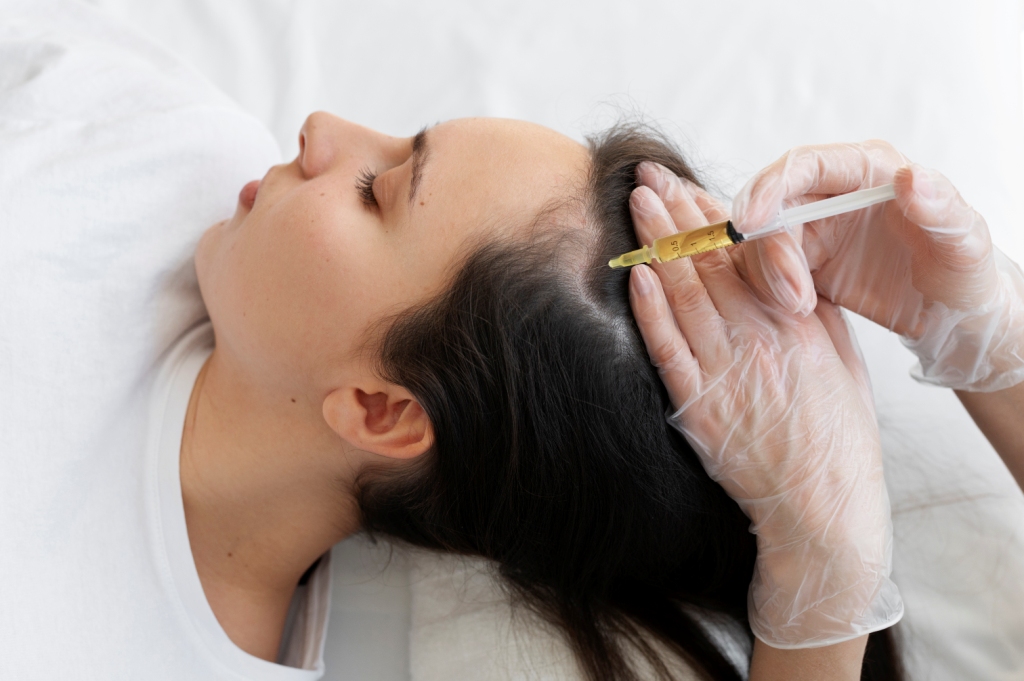Approximately 3% of people who have undergone laser hair removal treatments face the issue of paradoxical hair growth post-treatment. The chin and neck are most susceptible to paradoxical hair growth. Paradoxical hair growth or paradoxical hypertrichosis is a condition in which people notice hair growth after undergoing a laser hair removal procedure.
The past few years have seen an exponential increase in the number of people seeking laser hair removal treatments. The reason is that as opposed to the traditional methods of plucking, razors and waxing lasers are safe, painless, and give long-term hair reduction. It is said to be permanent because the growth of terminal hair reduces and becomes longer than the hair cycle period.
Lasers apply three principles in hair removal- photothermal to raise the temperature of hair bulbs and cause thermal destruction, photomechanical for shock wave formation, and photochemical by free radicals. The commonly used lasers for hair removal are Ruby, Alexandrite Nd-YAG, and Intense Pulsed Light (IPL). The effectiveness of laser treatments depends on many factors both patient and technologic. Patient factors include skin type, degree of tan, hair type, and colour, the hair cycle, hormonal compositions etc. In technological factors, fluence, pulse duration, system specifications, and wavelength used all come into play. One of the biggest dependent factors of paradoxical hypertrichosis is the operator’s expertise.
Reasons for paradoxical hair growth
Though rare, we do see patients complaining of increased hair growth after laser treatments says Dr Rinky Kapoor. This condition can be caused because of several reasons including
· Use of Inadequate energy levels: Laser hair removal works by delivering a specific wavelength of light energy to target and destroy the melanin in hair follicles. Low temperatures such as 45-50 degrees don’t destroy the hair follicles effectively. If the energy levels are insufficient, the hair follicles may not be effectively disabled, and instead, they might be stimulated, leading to increased hair growth.
· Incorrect settings: Using the wrong settings on the laser device because of a lack of knowledge, such as using settings not suitable for an individual’s skin type and hair colour, can cause paradoxical hair growth. Different hair and skin types require different settings for effective hair removal.
· Hormonal changes: Hormonal fluctuations, such as those that occur during pregnancy or due to conditions like polycystic ovary syndrome (PCOS), can influence hair growth. These hormonal changes may lead to new hair growth in treated areas or cause dormant hair follicles to become active again.
· Incomplete treatments: Laser hair removal usually requires multiple sessions for optimal results because hair grows in different cycles and this is determined by the dermatologist. If someone discontinues treatment before completing the recommended sessions, it can lead to partial hair removal, followed by potential regrowth and unsatisfying results.
· Variation in hair follicle size: Hair follicles come in different sizes, and some may be more resistant to laser treatment than others. Larger or deeper hair follicles might not be effectively targeted by the laser, allowing them to produce new hair.
· Equipment issues: Laser technology is evolving every day. The effectiveness of laser hair removal also depends on the quality and maintenance of the laser equipment used by the practitioner. Outdated or poorly maintained devices may not deliver consistent results and cause skin damage in the process too.
In order to ensure that each of her patients gets the most optimum results, and avoid increased hair growth, Dr Rinky Kapoor ensures that at The Esthetic Clinics, laser treatments are
· Only recommended after examining the patient’s skin types, hair growth, thickness, density, and degrees of tan. A medical checkup for hormonal dysfunctions and other issues is also done. Ideally, for conventional hair removal using lasers, a patient should be healthy, have normal hormonal status, and have thick, dark, and terminal hair with light skin.
· Of the highest quality with the latest techniques which include high fluence and short pulse duration lasers which have repeated and fast emissions. The temperature is up to 65 degrees and has a repeated cooling mechanism which is safe for the skin as opposed to the in old time lasers.
· Charted out and the patient explained the importance of having full and regular treatments. Laser treatments result in temporary hair loss and delay in hair regrowth to several weeks to months. when done properly post laser treatment the thick hair is replaced by fine hairs. This is possible when treatment is repeated.
· Done in the right stage of the hair cycle: The anagen phase when the hair follicles are in growth mode is the best time to start the laser hair treatment.
. Done in this stage the regrowth of hair is usually delayed for up to 6-8 weeks. Dr Rinky Kapoor plans the laser hair removal sessions after taking the hair growth cycles of different parts of the body into consideration. Laser hair removal at short intervals reduces the efficacy of the treatment.
If paradoxical hair growth does occur, consulting with a dermatologist or healthcare provider is advisable to determine the underlying causes and explore potential solutions. The other treatment options include electrolysis, and treating the underlying cause of hair growth.
Shared by: Dr. Rinky Kapoor,
The Esthetic Clinics







